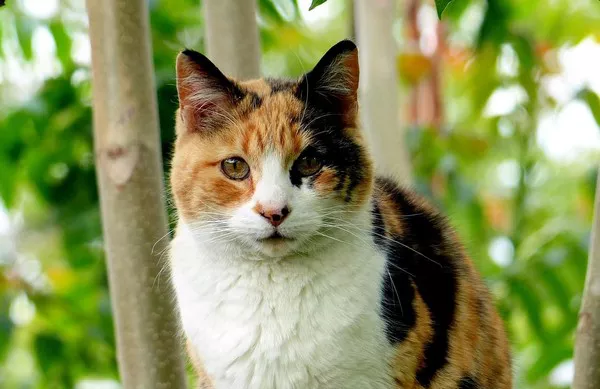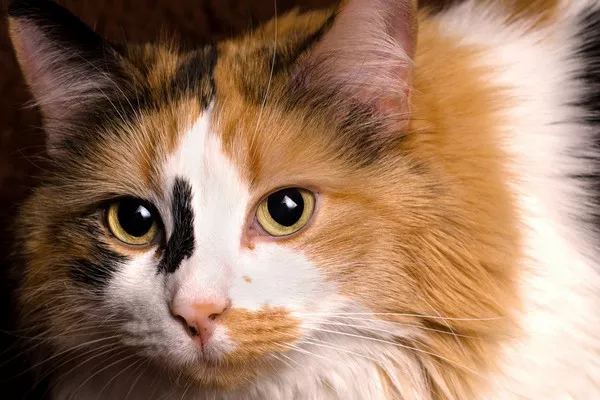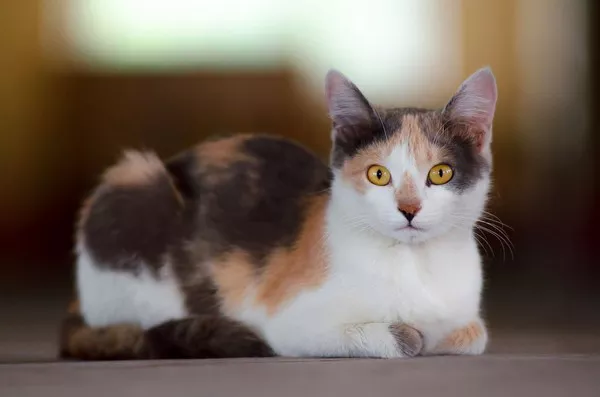Calico cats, with their vibrant tricolor coats, are a delight to behold. As a cat owner, you may find yourself wondering whether bathing your calico cat is a necessary part of their grooming routine. Cats are known for their meticulous self-grooming habits, and many felines maintain a healthy coat without the need for regular baths. However, there are situations where bathing may be beneficial or even essential. In this article, we explore the considerations, benefits, and challenges of bathing your calico cat, emphasizing the importance of a delicate approach to care and consideration for your feline friend’s unique needs.
Understanding the Calico Coat
Calico cats are characterized by their distinctive tricolor coat patterns, which typically include patches of black, orange, and white fur. The distribution of these colors can vary, creating a mosaic-like appearance that adds to their charm. Calico cats come in both longhair and shorthair varieties, each with its own grooming considerations.
Longhair Calico Cats:
1. Luxurious Coats: Longhair calico cats boast luxurious and flowing coats that demand more extensive grooming to prevent matting and tangling. The length and density of their fur make regular maintenance essential to ensure a healthy and beautiful coat.
2. Matting Concerns: The long, silky fur of these calico cats can be prone to matting, especially in areas such as the hindquarters. Matting occurs when loose hairs become entangled, forming knots that can be uncomfortable for the cat and challenging to remove without proper grooming.
Shorthair Calico Cats:
1. Manageable Coats: Shorthair calico cats have shorter coats that are generally more manageable. While they may not require as much grooming as their longhair counterparts, regular care is still essential to remove loose hair, prevent shedding, and maintain overall skin health.
2. Shedding Concerns: Shorthair calico cats may experience shedding, particularly during seasonal changes. Regular brushing can help minimize shedding and keep their coat in optimal condition.
Benefits of Bathing Your Calico Cat
While many cats are proficient self-groomers, there are circumstances where bathing your calico cat can offer several benefits:
Matting Prevention:
1. Longhair Calicos: Regular bathing can help prevent matting in longhair calico cats. Bathing softens the fur, making it easier to brush and detangle. This is particularly crucial in areas prone to matting, such as the hindquarters.
2. Shorthair Calicos: Even shorthair calicos can benefit from occasional baths to remove loose hair and prevent matting, especially if they have a thick or dense coat.
Skin Condition Management:
1. Allergies or Dermatitis: If your calico cat has allergies or dermatitis, bathing with a vet-approved shampoo can help manage these conditions. Gently cleansing the skin can reduce irritation and promote a healthier coat.
2. Flea Infestations: Bathing is a crucial component of addressing flea infestations. Using a flea shampoo recommended by your veterinarian can help eliminate fleas and soothe irritated skin.
Show Cats and Aesthetics:
1. Primping for Shows: Calico cats that participate in cat shows may require baths to maintain the pristine condition of their coat. Show cats often undergo more rigorous grooming routines to showcase their beauty.
2. Aesthetic Appeal: Bathing can enhance the overall aesthetic appeal of your calico cat’s coat, leaving it soft, shiny, and free from debris. This is particularly relevant for longhair calicos, where coat aesthetics are a significant consideration.
Special Circumstances:
1. Elderly or Ill Cats: Older or ill cats may struggle with grooming, leading to issues such as matting, odor, or discomfort. In such cases, gentle bathing can provide relief and maintain the cat’s overall well-being.
2. Sticky Substances or Dirt: If your calico cat gets into something sticky or dirty, a bath may be necessary to remove these substances. In such cases, prompt and thorough bathing can prevent skin irritation or ingestion of harmful substances during self-grooming.
Challenges and Considerations
While bathing can offer various benefits, it’s essential to approach the process with care and consideration, recognizing the challenges and potential stress it may cause for your calico cat:
Natural Resistance to Water:
1. Inherent Dislike: Cats, in general, are known for their aversion to water. Many cats find the sensation of being wet and the process of bathing stressful and uncomfortable.
2. Stress and Anxiety: For some cats, the stress of being bathed can result in anxiety, vocalization, and even attempts to escape. It’s crucial to create a calm and reassuring environment to minimize stress during the bathing process.
Negative Associations:
1. Negative Experiences: If a cat has had negative experiences with bathing in the past, they may develop a strong aversion to the process. It’s essential to gradually introduce and desensitize your cat to bathing, focusing on positive reinforcement.
2. Respecting Individual Preferences: Each cat is unique, and their tolerance for bathing varies. Some cats may tolerate or even enjoy baths, while others may find it distressing. Respecting your cat’s individual preferences is key to maintaining trust.
Proper Handling and Technique:
1. Physical Safety: Bathing involves physically handling your cat, which can be challenging if the cat becomes agitated or tries to escape. It’s important to prioritize both your safety and the cat’s well-being during the bathing process.
2. Gentle Techniques: Using gentle techniques, including gradual introductions, positive reinforcement, and patience, can help make the experience more comfortable for your calico cat.
Choosing the Right Products:
1. Cat-Friendly Shampoos: Selecting the right shampoo is crucial. Always use a cat-specific shampoo that is gentle on their skin and coat. Human shampoos or harsh chemicals can cause irritation and discomfort.
2. Avoiding Ear Canal: When bathing, take care to avoid water entering the cat’s ears. Moisture in the ears can lead to ear infections. Use cotton balls to protect the ears or opt for shampoos specifically designed for cats.
Bathing Your Calico Cat: Tips and Techniques
If you decide that bathing is necessary for your calico cat, follow these tips and techniques to ensure a positive and stress-free experience:
Gradual Introduction:
1. Positive Associations: Begin by creating positive associations with the bathing area. Allow your cat to explore the bathroom without the intention of bathing. Offer treats, toys, or comfortable bedding to create a positive environment.
2. Gradual Exposure: Gradually introduce your cat to the sound of running water, the sight of the bathtub or sink, and the sensation of being gently touched in a bathing manner. This gradual exposure can help reduce anxiety.
Positive Reinforcement:
1. Treats and Praise: Use treats and verbal praise as positive reinforcement throughout the bathing process. Reward your cat for calm behavior and compliance, creating a positive association with the experience.
2. Short Sessions: Keep the initial bathing sessions short to prevent overwhelming your cat. Gradually increase the duration as your cat becomes more comfortable with the process.
Gentle Handling:
1. Secure Grip: When handling your cat during the bath, ensure a secure grip to prevent slipping or sudden movements. Use a non-slip mat in the bathing area to provide stability for your cat.
2. Calm Communication: Speak to your cat in a calm and soothing voice. Avoid sudden movements or loud noises that could startle your cat. A calm environment contributes to a more relaxed bathing experience.
Choosing the Right Products:
1. Cat-Specific Shampoo: Select a cat-specific shampoo that meets your calico cat’s needs. Consult with your veterinarian if your cat has specific skin conditions that require special attention.
2. Ear Protection: Use cotton balls or special caps designed to protect your cat’s ears from water during the bath. Moisture in the ears can lead to discomfort and potential infections.
Proper Drying:
1. Towel Drying: After the bath, use a soft towel to gently dry your cat. Avoid vigorous rubbing, as this can cause additional stress. Ensure your cat is thoroughly dry to prevent chilling.
2. Optional Blow Drying: Some cats tolerate blow drying on a low, cool setting. If your cat is comfortable with this, use a pet-friendly hairdryer to ensure complete dryness.
Conclusion
In conclusion, the decision to bathe your calico cat depends on various factors, including the cat’s health, grooming needs, and individual preferences. While many calico cats may not require regular baths, situations such as matting, skin conditions, or external factors may warrant bathing. The key to a successful bathing experience lies in a delicate approach, patience, and consideration for your cat’s well-being.
As a responsible cat owner, it’s crucial to assess your cat’s specific needs, monitor their coat condition, and be attuned to any signs of discomfort or stress during grooming. Whether your calico cat enjoys the occasional bath or requires special care, always prioritize their comfort, trust, and overall happiness. By approaching bathing with sensitivity and understanding, you can ensure that grooming remains a positive and bonding experience for both you and your cherished calico companion.



























